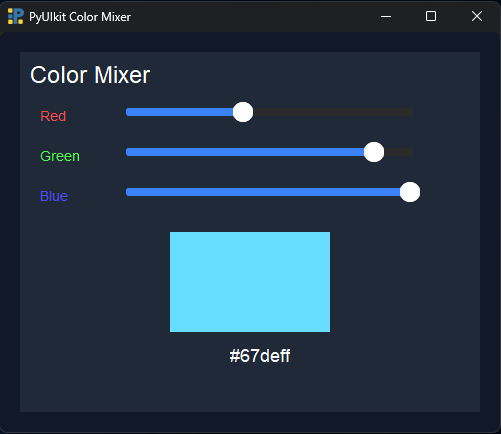SQL JOIN Types and Differences Explained
In SQL, JOIN refers to the function that combines two or more tables to retrieve data as a single result set. Since databases are typically designed with data separated into multiple tables for better organization and management, JOIN is essential for merging this data to derive meaningful information. It allows efficient querying based on the relationships between these separate tables.
Relational databases store and manage data in multiple normalized tables. JOIN serves as a key tool that combines data from these tables based on their relationships. By using JOIN, it is possible to reduce duplication and maintain data integrity while easily integrating and retrieving data according to various conditions. This makes JOIN indispensable for data analysis and report generation.
JOIN connects two tables based on a specified column and can take different forms such as INNER JOIN, LEFT JOIN, RIGHT JOIN, and FULL JOIN. By choosing the appropriate type of JOIN for the situation, one can accurately retrieve the desired data. For example, joining customer information with order details makes it easy to view each customer’s order history in one query. In this way, JOIN is a highly useful function for integrating data across multiple tables in a relational database.
RIGHT JOIN (RIGHT OUTER JOIN) Features

Difference between RIGHT JOIN and LEFT JOIN
RIGHT JOIN combines all records from the right table with matching records from the left table, whereas LEFT JOIN does the opposite by preserving all records from the left table. The key distinction is which table’s data is preserved entirely in the result set. In RIGHT JOIN, unmatched rows from the right table appear with NULL values for the left table’s columns, while LEFT JOIN does the same for the right table’s columns. The choice between LEFT and RIGHT JOIN depends on which table’s data you want to retain fully.
Main use cases of RIGHT JOIN
RIGHT JOIN is mainly used when you want to ensure that all data from the right table appears in the results, even if there are no corresponding records in the left table. For example, when generating reports that should list all products regardless of whether sales data exists, RIGHT JOIN ensures that the product list is complete. This JOIN type is suitable when retaining the right table’s data is important, such as in summary reports or statistical analyses.
Comparison between RIGHT JOIN and FULL JOIN
RIGHT JOIN retrieves all rows from the right table and matches them with rows from the left table where conditions are met. FULL JOIN, in contrast, retrieves all rows from both tables, combining them and filling in NULLs where no match exists. FULL JOIN is more comprehensive than RIGHT JOIN because it allows you to review the full set of data from both tables. FULL JOIN is preferred when you need to ensure no data is omitted from either table and want to analyze both datasets completely.
SELF JOIN: With yourself, JOIN

SELF JOIN: Concept and Example
A self join is a technique where a table is joined to itself as if it were two distinct tables. This is useful when you need to compare rows within the same table or link related rows. For example, in an employee table, you might use a self join to link employees with their managers. In such cases, table aliases are assigned to distinguish the two instances of the table in the query. The SELECT statement specifies join conditions using these aliases. A self join is particularly helpful when you want to clearly identify relationships between rows within a single table.
SELF JOIN in Hierarchical Data Processing
Self joins are commonly used to query hierarchical data structures. Typical examples include organizational charts, category trees, and department structures where parent-child relationships exist. By using a self join, you can connect parent and child items and retrieve their relationships in a single query. This allows hierarchical data to be represented in a tree format or enables the display of both parent and child information together. In this way, self joins play an important role in efficiently handling and analyzing hierarchical data.
SQL JOIN optimization and performance considerations

Index usage in JOIN
To improve the performance of JOIN operations in SQL, it is important to set indexes appropriately. Creating indexes on columns used in JOIN conditions significantly enhances query speed. For example, if both tables have indexes on the columns used for JOIN, the database can reduce unnecessary data scans and improve processing speed. The ANSI, an internationally recognized standards organization for SQL, highlights the importance of index optimization in relational databases.
Performance tips for large data JOIN
When joining large datasets, the choice of join type and data volume can greatly affect performance. Avoid selecting unnecessary columns and specify only those required for the query. Separating conditions appropriately between the JOIN clause, WHERE clause, or ON clause can reduce redundant data processing. The ISO, a respected international standards body, also emphasizes the importance of query optimization strategies in large-scale data processing.
Points to consider when writing JOIN queries
When writing JOIN queries, ensure that logical conditions are correctly specified. Missing JOIN conditions may result in a Cartesian product, returning an unexpectedly large data set. When joining multiple tables, clearly define the priority of conditions and, where possible, use JOINs rather than subqueries to enhance readability and performance. Global standard organizations such as the W3C provide guidelines on consistency and performance in database query writing.
Choosing the Right SQL JOIN for Your Situation

SQL JOIN is an essential function for combining data from multiple tables in a database. INNER JOIN is typically used to retrieve records that exist in both tables, while LEFT JOIN keeps all records from the left table and matches data from the right table. RIGHT JOIN focuses on the right table, and FULL JOIN combines all records from both tables without omission. Organizations such as the International Organization for Standardization (ISO) have included these JOIN syntaxes in the ANSI SQL standard to ensure compatibility and consistency across database systems.
In real-world data analysis and application development, it is important to choose the appropriate JOIN based on the characteristics and purpose of the data. For example, use FULL JOIN if you need to review all records without omissions, or consider LEFT JOIN or RIGHT JOIN if you want to combine data based on a specific reference table. Careful attention to index structures and data volume is essential for performance and query optimization. The Database Administrators Association International (DBA International) also recommends focusing on optimization and accuracy when using SQL JOIN. Visit 프리또 for more reliable information.


